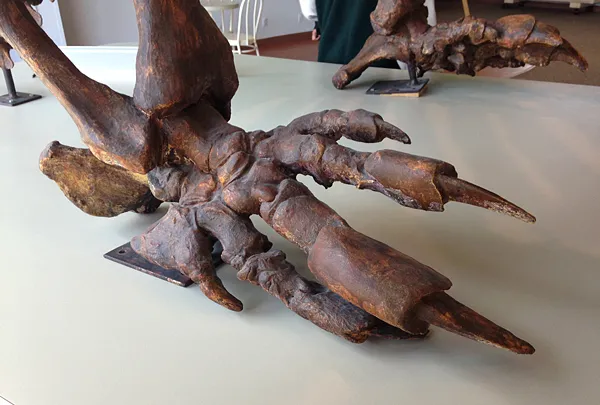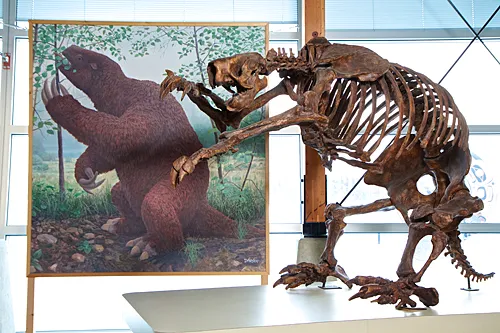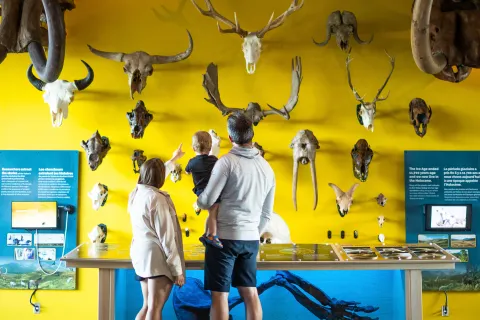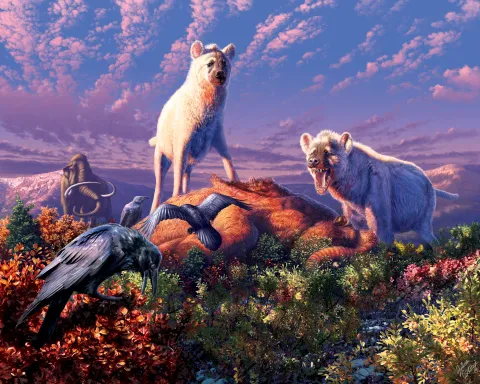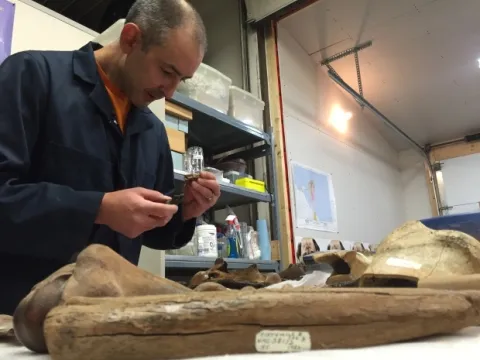- Log in to post comments
January 24, 2014
The first journey of elk and humans across the Bering Land Bridge
Determining when particular species of plants and animals colonized different regions is an important field of research for many scientists. Not only is it of historical interest, but it also enables us to establish how and why different organisms react to environmental change, and how well adapted they are to their current location. For the Americas, the Bering Land Bridge is the most important entry point; allowing the migration of animals, and people, from Asia during the ice age. The precise date on when the first people walked across the Land Bridge remains a hotly debated topic in archaeology.
In a research study published in the Proceedings of the Royal Society B, an international team of scientists argue that the fossil record of North American elk, (Cervus elaphus canadensis) is a useful proxy for understanding when people could, or could not, make the great first step from Asia to Alaska across the Bering Land Bridge.
Elk are one of North America’s iconic large mammals even though they are a relative new-comer to the continent. Ian Barnes, a researcher at London’s Natural History Museum who lead the study says “For the first time, we now know when wapiti [elk] first colonized North America, and the ancient environmental conditions which facilitated their migration. This also helps us understand when and how the first people arrived there too”.
The researchers obtained radiocarbon dates, genetic and isotopic data on over a hundred ancient elk antlers, teeth and bone samples from Asia and North America, including specimens from the Yukon. Results of these analyses indicate that elk populations expanded into and were most abundant in northeast Siberia during the relative warm period around 50,000 years ago. However the good times for elk were hit hard by the peak cold conditions of the Last Glacial Maximum, with a long period of population decline until about 22,000 years ago. With a return to more favourable climates, starting around 15,000 years ago, the good conditions for elk returned and populations in Siberia experienced continuous growth to the present. Shortly after, elk expanded across Beringia into Alaska and eventually across most of North America.
These results raised a couple key questions. If elk had a long history in Siberia, why did they only cross the Bering Land Bridge into North America relatively late? And, what environmental conditions enabled migration to occur at that time?
Meiri and fellow researchers suggest there must have been some barrier that prevented the expansion of elk eastward into North America for much of the last 50,000 years. Palaeoenvironmental data indicates that the central Bering Land Bridge was much colder and wetter, and not favourable habitat for elk for much of the late Pleistocene. With increased forage production associated with a brief warming period around 15,000 years ago, mixed feeders such as elk were for the first time able to expand from Siberia eastward, colonizing North America. This period of migration was abruptly cut off by 11,000 years ago when sea level rise flooded the Bering Land Bridge.
Remarkably, this scenario for Beringian elk populations closely mirrors the archaeological evidence for the first human migration into North America. The researchers propose that human populations in Beringia were responding to the same climatic or environmental variables affecting elk–variables that prevented both mammals from colonizing North America until around 15,000 years ago. The study further suggests that humans may have migrated alongside the elk migration as specialized hunters. Data from multiple archeological sites supports the idea that this warming period and expansion of elk may have facilitated the migration of humans across the Bering land bridge and further south throughout the Americas.
This study was completed as part of doctoral research of Meirav Meiri at Royal Holloway, University of London, and represents the collaboration from scientists from the United Kingdom, United States of America, Israel, Russia and Canada. Government of Yukon Palaeontologist, Grant Zazula says, “Many Yukoners are curious about the history of elk in the Yukon. It is great to finally resolve some outstanding questions about when this species lived in Beringia and how it relates to the earliest human populations in North America. I am proud that the Yukon Palaeontology Program can support, and collaborate with students and scientists from across the globe to uncover new information on Yukon fossils and our ancient history.”
Reference: Faunal record identifies Bering isthmus conditions as constraint to end-leistocene migration to the New World. Meirav Meiri, Lister AM, Collins MJ, Tuross N, Goebel T, Blockley S, Zazula GD, van Doorn N, Guthrie RD, Boeskorov GG, Baryshnikov GF, Sher A, Barnes I. 2014. Proceedings of the Royal Society B, Biological Sciences, 281.
Contact: Ian Barnes - I.Barnes@nhm.ac.uk

